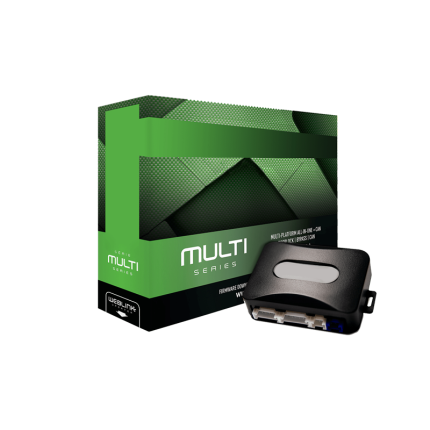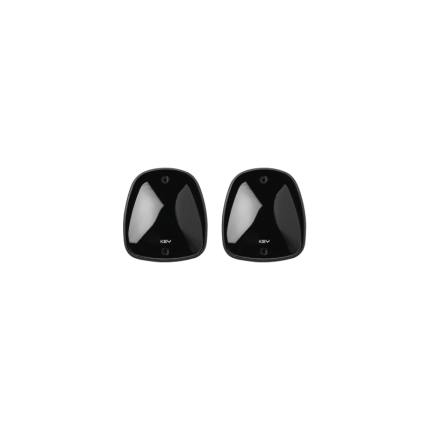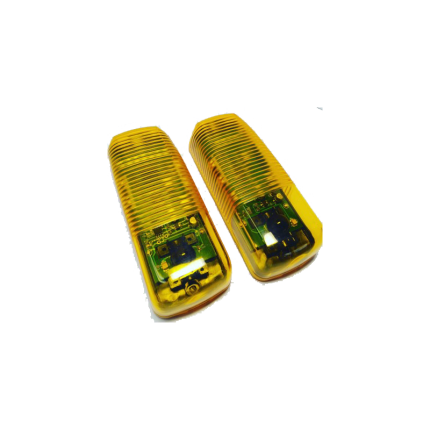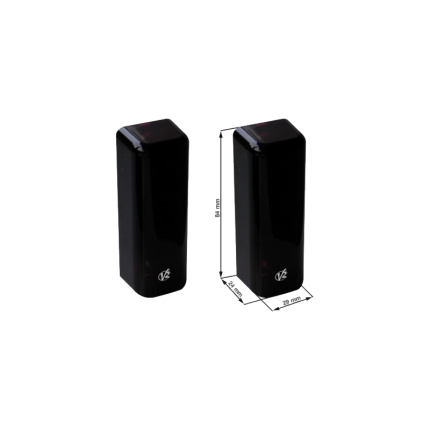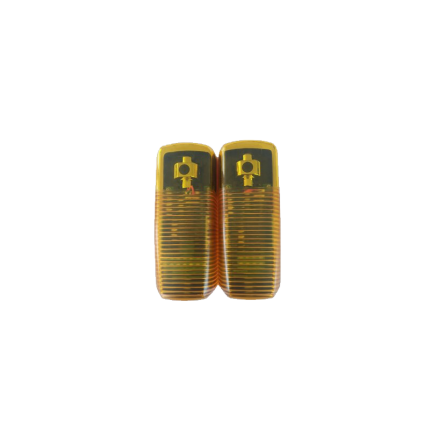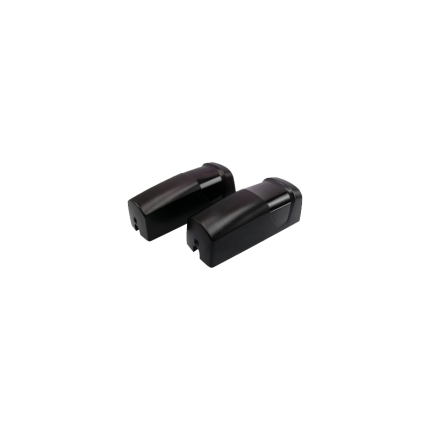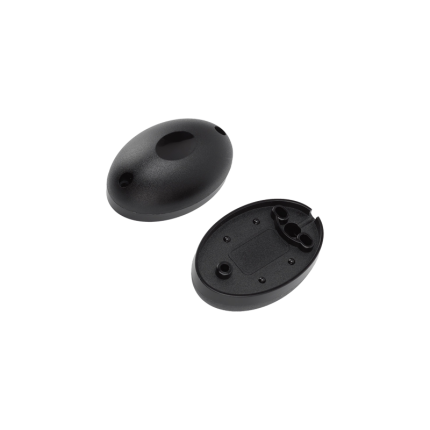Shop
Remote starter immobilizer bypass module
Ship or pick up from our office.
Remote starter immobilizer bypass module
A remote starter immobilizer bypass module is an essential component when installing an aftermarket remote car starter in most modern vehicles. Its sole purpose is to "trick" the vehicle's factory immobilizer system into believing that the correct key is present in the ignition, allowing the engine to start remotely. Here's a breakdown of what that means: What is a remote starter immobilizer bypass module system? Since around the late 1990s, and mandated for all new cars sold in Canada since the year 2000, virtually every vehicle is equipped with an electronic immobilizer system as an anti-theft measure. This system prevents the engine from starting unless it detects a specific, valid code.- How it works:
- Your car key (or smart key fob) contains a small electronic chip called a transponder. This chip stores a unique electronic code.
- When you insert the key into the ignition (or, with push-button start, have the fob within range), the vehicle's onboard computer (often via an antenna coil around the ignition barrel) reads the code from the transponder.
- If the code matches what's stored in the vehicle's ECU (Engine Control Unit), the remote starter immobilizer bypass module is deactivated, and the engine is allowed to start and run.
- If the code doesn't match, or if no valid code is detected (e.g., someone tries to hot-wire the car, or uses an unprogrammed key), the immobilizer will prevent the engine from starting, or it will start for a few seconds and then immediately shut off. It typically disables vital functions like the fuel pump or ignition system.
RFID Card Access Control
RFID Tag Access Control
Safety Sensor – Key Automation 900FT33
Ship or pick up from our office.
Safety Sensor - Key Automation 900FT33
- NO/NC
- AC 10-30 V / DC 10-40 V
- Receiving Range: 25 Meters
- IP 54
Safety sensor – P51033H
Ship or pick up from our office.
Safety sensor - P51033H
*NO/NC *AC/DC 12-24 V *Receiving Range: 12 Meters *IP 54 *External LED flash lamp signal (AC/DC 12V-24 V) *The safety sensor included the LED flash lightSafety sensor – V2 Sensiva XS
Ship or pick up from our office.
Safety sensor - V2 Sensiva XS
*NO/NC *AC 12-24 V / DC 21-36 V *Receiving Range: 20 Meters *IP 44Discover the SENSIVA V2 Safety Sensor
The SENSIVA V2 photocells are innovative safety devices designed to provide optimal protection for your automated gates and garage doors. Using an infrared beam, they efficiently detect obstacles to stop or reverse the gate's movement, thus preventing any risk of collision or accident. With their compact design and advanced synchronization technology, they easily integrate into any type of installation, offering a reliable and durable solution for both indoor and outdoor environments.Technical Specifications
- Power Supply: 12-24 V AC / 12-36 V DC
- Range: Up to 20 meters for the SENSIVA-XS model, and 25 meters for the standard SENSIVA model
- Protection Rating: IP54, resistant to dust and water splashes
- Orientation: Head adjustable horizontally up to 180° and vertically up to 30° (SENSIVA only)
- Dimensions: 84 x 29 x 24 mm (SENSIVA-XS) and 86 x 41 x 38 mm (SENSIVA)
- Operating Temperature: -20°C to +60°C
- Manual: Digital (QR Code) with simple and quick installation
Key Features
- Maximum Safety: Accurate and reliable obstacle detection to prevent accidents.
- Synchronization: Advanced technology to prevent interference between multiple pairs of photocells.
- Versatile Installation: Compatible with wall or post installations (SENSIVA-XS).
- Weather Resistance: IP54 rating and optimal operation under extreme conditions.
- Adjustable Orientation: Easy configuration to fit all installations (SENSIVA model).
Why Choose the SENSIVA V2 Photocells?
- Reliability: Ensure the safety of your automated gates with precise and effective obstacle detection.
- Modern Technology: Anti-interference synchronization and protection against sunlight.
- Durability: Resistant to wear and weather conditions thanks to robust design and high-quality materials.
- Flexibility: Two models to meet all needs: compact (SENSIVA-XS) or standard (SENSIVA).
Safety sensor FO-MATIC
Ship or pick up from our office.
Safety sensor FO-MATIC
*NO/NC *AC/DC 12-24 V *Receiving Range: 15 Meters *IP 44Safety sensor FT2008
Ship or pick up from our office.
Safety sensor FT2008
*NO/NC *AC/DC 12-24 V *Receiving Range: 15 Meters *IP 44A gate opener safety sensor is a device designed to detect objects or people in the path of an automatic gate and prevent it from closing or hitting them, ensuring safety and preventing damage or injury.
These sensors can be photoelectric, pressure sensors, magnetic sensors, or loop detectors and are crucial for preventing accidents and ensuring smooth gate operation.
Types of Gate Opener Safety Sensors:
-
Photoelectric Sensors:These sensors use an infrared beam to detect objects. When the beam is broken by an object, the gate opener is signaled to stop or reverse.
-
Pressure Sensors:These sensors are typically located along the edge of the gate and detect pressure when the gate comes into contact with an object.
-
Magnetic Sensors:These sensors use a magnetic field to detect the presence of vehicles or objects near the gate.
-
Loop Detectors:These sensors use a wire loop buried in the ground near the gate. When a vehicle or object passes over the loop, it triggers the gate to stop or reverse.
How They Work:
- Detection: The sensor detects the presence of an object or person in the gate's path.
- Signal: The sensor sends a signal to the gate operator.
- Action: The gate operator responds by stopping, reversing, or remaining open, depending on the sensor type and programmed settings.
Importance of Safety Sensors:
- Prevent Accidents: They protect people and vehicles from being hit by the gate.
- Prevent Damage: They help avoid damage to the gate, vehicles, or property.
- Ensure Reliable Operation: They contribute to the smooth and safe operation of the gate.
Safety sensor P51022H
Ship or pick up from our office.
Safety sensor P51022H
*NO/NC *AC/DC 12-24 V *Receiving Range: 12 Meters *IP 54 *External LED flash lamp signal (AC/DC 12V-24 V) *Internal Rotation system: 0~180Safety Sensor P52000H
Ship or pick up from our office.
Safety Sensor P52000H
IP Rating: IP54
Certification: CE
Working Voltage: 12V-24V AC/DC
Temperature Rane: -20ºC to 60 ºC
Protection Index: IP54
Photocell Wavelength: 940nm
Receiver Range: More Than 12m
Weight: 139g
A gate opener safety sensor is a crucial component of automated gate systems designed to prevent accidents and damage by detecting obstructions in the gate's path.
These sensors, often photoelectric, use an infrared beam to monitor the area and trigger the gate to stop or reverse if something is blocking its movement.
How it works:
-
Transmitter and Receiver:A safety sensor typically consists of a transmitter that emits an infrared light beam and a receiver that detects the beam.
-
Obstruction Detection:When an object, person, or vehicle interrupts the beam, the receiver signals the gate operator to stop or reverse the gate's movement.
-
Safety Feature:This mechanism prevents the gate from closing on anything or anyone, ensuring safety and preventing potential damage.
Types of Safety Sensors:
-
Photoelectric Sensors (Photo Eyes):These are the most common type, using an infrared beam to detect obstructions.
-
Safety Edges:These sensors are typically placed along the edge of the gate and trigger a stop or reverse when they encounter pressure.
-
Induction Loops:These sensors are embedded in the ground and detect vehicles as they pass over them, triggering the gate to open or close.
Importance:
-
Safety:The primary function is to prevent accidents and injuries by stopping or reversing the gate when an obstruction is present.
-
Preventing Damage:By detecting obstructions, these sensors help avoid damage to the gate, vehicles, or anything else in its path.
-
Compliance:Safety sensors are often required for automated gates to meet safety regulations and standards.
Common Issues:
-
Misalignment:If the sensor is misaligned, the infrared beam may not reach the receiver, causing the gate to malfunction.
-
Obstructions:Debris, dirt, or other obstructions can interfere with the beam and trigger false alarms.
-
Sensor Failure:Like any electronic device, sensors can fail over time, requiring replacement.
Safety Sensor S300
Ship or pick up from our office.
Safety Sensor S300
A gate opener safety sensor is a crucial component of automated gate systems designed to prevent accidents and damage by detecting obstructions in the gate's path.
These sensors, often photoelectric, use an infrared beam to monitor the area and trigger the gate to stop or reverse if something is blocking its movement.
How it works:
-
Transmitter and Receiver:A safety sensor typically consists of a transmitter that emits an infrared light beam and a receiver that detects the beam.
-
Obstruction Detection:When an object, person, or vehicle interrupts the beam, the receiver signals the gate operator to stop or reverse the gate's movement.
-
Safety Feature:This mechanism prevents the gate from closing on anything or anyone, ensuring safety and preventing potential damage.
Types of Safety Sensors:
-
Photoelectric Sensors (Photo Eyes):These are the most common type, using an infrared beam to detect obstructions.
-
Safety Edges:These sensors are typically placed along the edge of the gate and trigger a stop or reverse when they encounter pressure.
-
Induction Loops:These sensors are embedded in the ground and detect vehicles as they pass over them, triggering the gate to open or close.
Importance:
-
Safety:The primary function is to prevent accidents and injuries by stopping or reversing the gate when an obstruction is present.
-
Preventing Damage:By detecting obstructions, these sensors help avoid damage to the gate, vehicles, or anything else in its path.
-
Compliance:Safety sensors are often required for automated gates to meet safety regulations and standards.
Common Issues:
-
Misalignment:If the sensor is misaligned, the infrared beam may not reach the receiver, causing the gate to malfunction.
-
Obstructions:Debris, dirt, or other obstructions can interfere with the beam and trigger false alarms.
-
Sensor Failure:Like any electronic device, sensors can fail over time, requiring replacement.
Safety sensor VDS-TEC2
Ship or pick up from our office.
Safety sensor VDS-TEC2
Technical Details:- NO/NC
- AC/DC 12-24 V
- Receiving Range: 15 Meters
- IP 44
- Compact
- Lightweight
- Portable
- Easy to use

